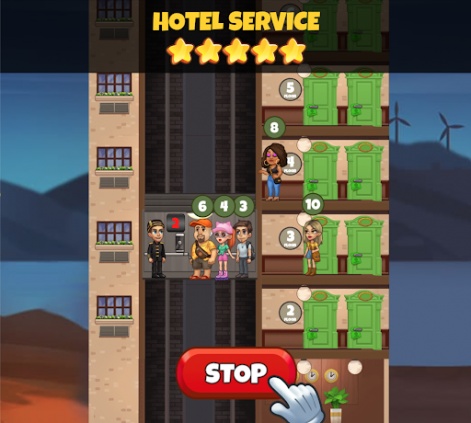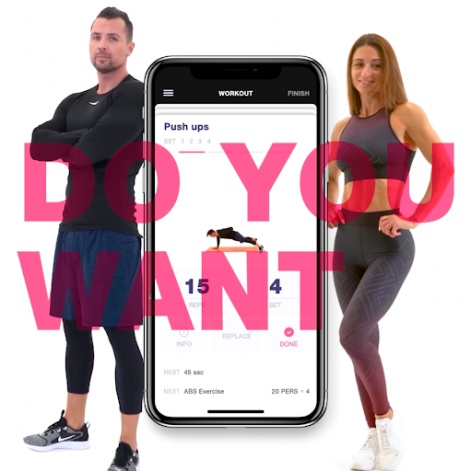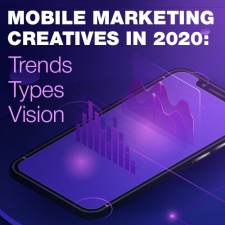Creatives in mobile marketing are the language that an advertiser speaks with their potential audience. The process of its design encourages a lot of discussions.
What is consumer psychology, how to access the target audience and why do we need a creative department in a mobile marketing agency?
Pavel Shishkin, head of the creative direction at AdQuantum, a performance mobile agency, will answer these questions.
Let’s start with a hot topic: why does a user acquisition agency need a creative department? Media buyer duties often combine creators’ and UA specialists’ functions.
We represent something in the middle of these two groups. The creative department is a unit connecting two departments. Firstly, we help formulate an idea correctly. Secondly, we understand the rules of correct composition, know all the metrics and can identify what will indeed perform.
Our goal is designing effective creatives. Therefore, our KPI is the percentage of those creatives that achieved a required spend criteria. In order to determine the efficiency of a creative, we analyse key metrics. Each offer has its own key metrics. It can be anything: ROI, ROAS, CPI, IPM – it depends on the offer, app category, client, etc.
Can you describe a creative’s lifecycle: from the very beginning to the moment you analyse results?
When accepting an offer we have to explore the app completely: its audience, competitors’ works, gaming functionalities. Then in close cooperation with UA managers we come up with hypotheses, set terms of reference. Next step – designers help us to put the idea into practice.
There has to be a variety of creatives to prove one hypothesis. We could not do it with a single creative. That is why we produce a number of different creatives.
After getting creatives finished we hand it over to UA managers who run tests. During and after ad campaigns we analyse the results.
We analyse these finished creatives through Facebook and third-party services and as a result, design a key creative fitting our target audience completely.
A core target audience would not be enough. Thus, we also work with the audience surrounding the core one. For this purpose we need to involve and surprise the potential audience with our content. We usually implement misleading creatives – so-called “misleads”. There are also metamisleads that we will talk more about later.
Can you explain what misleading creatives are, and why are they used?
Mislead is an ad creative showing features that do not actually exist in the app. This way the advertiser can attract a user that could enjoy a genre different from our app. After an acquired with metamislead player spends his time in the app we have a chance that they will remain engaged and continue using our app.
Not every app supports this approach. It is believed it is not that effective, as the chance of attracting a target and paying audience is too small.
Nevertheless, we could not say we should not use misleads at all. You can design qualitative fake ads where the main game mechanics adjust to the actual mechanics used in the app. But there are also drawbacks in this approach. Misleading creatives often decrease retention rate (RR) of the app.
You mentioned metamisleads. Tell us more about it?
We at AdQuantum do not use fake ads but we do implement metamisleading creatives (the definition we invented ourselves). These are the creatives reflecting something that could possibly exist in the app.
For instance, our agency drives traffic for Idle Evil Clicker. This is a mobile game about tortures in hell. AdQuantum developed a creative with a brand new torture not existing in the game plot. We can call it misleading creative, but it is really close to the actual gameplay. Therefore, we named it metamisleading creative. These ads succeeded so much that the developers of the game decided to add this new torture to the game.
Does your department adapt creatives for different GEOs?
If we narrow down the creative’s target audience, the cost of UA increases, so it is a lot less profitable for us. Thus, it is more optimal (but also more difficult) to create high-quality creatives for a wide audience than to adapt it for each country or region separately.
How do you adapt creatives to different types of audiences?
Ideally, we should create a universal creative even if the offer is directed to a specific gender.
For example, we have a game for a female audience where two main characters are engaged in a romantic relationship. The male audience would be interested in the sexual overtones – it would help us get cheaper UA and a higher Click Through Rate (CTR). The female audience would be more interested in the storyline – this would increase our RR and Lifetime Value (LTV). The most important thing is to get the right ratio of gender audiences.
Can creatives affect a product?
There is no doubt about it. Developers today mostly take two approaches to creative production. Some of them believe all apps should be created exclusively by marketing rules. The others think marketing tools are supposed to develop apps.
First approach looks like this:
- We create a fake page – for instance, through Split Metrics.
- UA managers launch an advertising campaign.
- Users visit this page following the ad creative.
- They can see the app is not available for download yet, but they can pre-register via a special button.
With this option of pre-registration a developer has an opportunity to figure out how many people are ready to download the app. If the metrics are satisfactory and possible players really expect the launch of this game, the product team continues to develop it and finally launches the game.
The second approach is more trivial. We create an app based on analytical research, audience preferences or developer ideas. Shortly after the soft launch, media buyers acquire traffic for the app.
These two ways of app development have confronted each other for years. In a perfect world, we should use both ways while developing an app.
What are the 2019-2020 trends in mobile app creatives?
The vast majority of ad creatives now appeal to emotions provoking empathy. Often creators in the beginning of the creative use stories about pregnant women getting into trouble. This misleading creative grabs the user’s attention and attracts them to download the app.
This approach works the best in the Facebook feed where the user comes to consume the feed’s content but not advertisement. Therefore, our main goal as mobile marketers is to hold our potential leads’ attention.
After we have attracted the user’s attention we have to show them the real interesting product in order to involve them even more.

Do you create playable ads? If so, how does it help AdQuantum acquire users?
Creatives like this are in high demand, since they dramatically increase RR. We also use them actively. Through our playable ads we offer players interactive fragments of gameplay. Our aim is to simplify one of the game mechanics in order to show that this is the game they always wanted to play.
Speaking again about pregnant women in the creatives, besides tragic storylines, we add to the creative an opportunity to get a reward. In order to get it and rescue the pregnant character, you would for instance need to finish a match 3 game.

How often do you design ads including real people?
We use this approach on a regular basis. For instance, we occasionally show influencers in our creatives for the Dragon Champions mobile game.
In the fitness & wellness app category there is a trend of using influencers in ads. When a fitness coach explains in detail how you should do the exercises and shows the result of training through their body, users trust the product more.

We use the same approach in TikTok ad creatives in order to adjust to its specific trend where every video contains real people.
On the other hand, animated ads have their advantages as well. They are just simpler and cheaper to produce. Moreover, they let us create metamisleading creatives if we are talking about game offers.
Did the pandemic affect mobile marketing creative trends?
We do not see many references to the pandemic topic in mobile ads these days. The audience got used to the lockdown. We can compare this phenomenon to banner blindness when visitors of a website unconsciously ignore banner-like information. When we stop emphasising it we are trying to connect this matter to the app mechanics.
But during the lockdown we actually used the pandemic attributes. For example, in the Dragon Champions ads we pictured face masks, one of the most common pandemic symbols. One of its main characters, Rin the Unseen, is a ninja. We used an art showing her in a mask and urged users to put on masks when leaving the house.
One of the main questions regarding creatives production: how do you make a performing creative?
There is no universal rule working for every creative to make it perfect. In order to create a successful one you need to completely know the product you are working on, its audience and the traffic source fitting this kind of app.
The average human’s attention span nowadays is ~8 seconds. By comparison, a goldfish has ~9 seconds attention span. This is why a part of users cannot fully recollect an ad creative by the time they proceed to the app store. Not only should creators make attractive advertising, but they should also confirm the user’s expectations from the app in the store.
We at AdQuantum have a strong professional team of creators working on acquisition of a target paying audience with a high RR. We constantly offer fresh ideas and make creatives according to the client’s wishes at the same time. We produce about 10 variations of 1 hypothesis in order to conduct the most extensive A/B-testing and develop the best performance creatives. Our success depends on your success!

